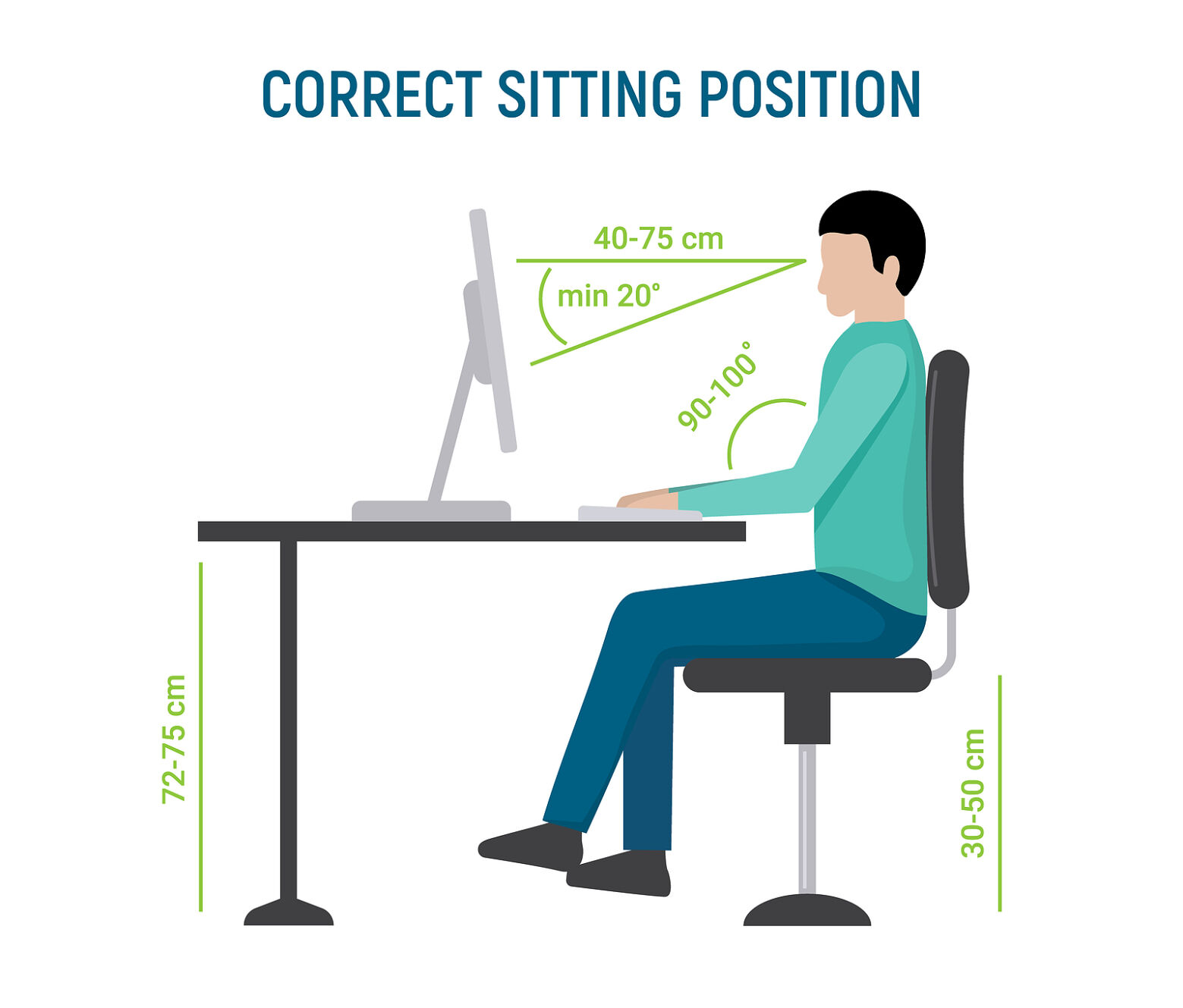Studies show that we have become more sedentary as a population through time.
For the average person, Forbes reports that “more than half of their day is spent sitting. The normal office worker sits a shocking 15 hours every single day.”
While this article will focus on proper sitting posture at a desk, the general guidelines can be applied for sitting in most any setting to help avoid common strain, tension and repetitive use injuries.
Here are some basic guidelines for proper posture at your desk:
• Begin by adjusting the height of your chair so your feet are flat on the floor or on a footrest and your thighs are parallel with the floor.
• The edge of your chair should be just behind your knees a couple of inches or so.
• Ideally, your low back should curve forward just slightly. If you are able to adjust your chair to support your low back comfortably, great. If not, consider investing in a lumbar support cushion.
• Relax your arms comfortably to your sides, with your shoulders down away from your ears and your elbows flexed to approximately 90 degrees. If you have armrests, lower them down or consider removing them altogether.
• Bring your head back into alignment so your ear is over your shoulder, keeping your head in a neutral alignment looking straight ahead.
• Now consider your desk height. You should have plenty of clearance for your legs.
• You should be able to now reach your desk comfortably and see your work without turning your head side-to-side or up or down. If you wear glasses and you find it difficult to see your work and maintain ideal alignment, talk with your optometrist about options to consider.
• Avoid reaching forward from your shoulders, bringing your work closer to you to reduce neck and shoulder strain. If you use a phone consistently, consider a headset to avoid holding the phone between your neck and shoulder.
Being mindful of our posture and body mechanics at work can certainly be a first step to easing discomfort and reducing our risk of injury. Enlisting the help of a physical therapist or an ergonomics specialist can help to ensure your specific needs and goals are addressed. In working with a provider who specializes in ergonomics, you can also explore a wider variety of options that may be right for you such as a standing desk or replacing your chair with a stability ball.
Don’t be afraid to experiment. You might find that you are not only more comfortable, but also that your mental focus and creativity improve as well.
Resources: https://bit.ly/3XmJ6gK



